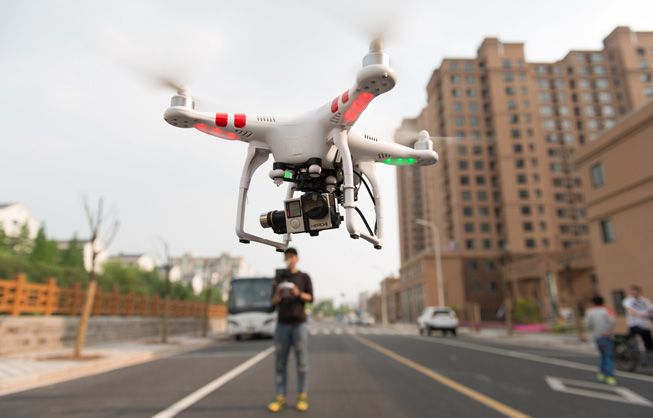Navigating the legalities of flying a drone

Hula hoops, scooters, Nintendo and drones. We seem to flit from one pop culture craze to the next, but drones are a little different than most. More accurately called unmanned aerial vehicles (UAVs) or quadcopters, modern drones are popular for both recreational flying and as small business tools.
But whether you use a drone to shoot video of your weekend hike or to survey roofs for your real estate business, the law has something to say about how you are permitted to fly.
Flying recreationally
Understandably, federal law regarding recreational or hobbyist drones can be a bit confusing as there can be conflicting and seemingly ever-changing requirements.
As of May 2017, if you fly a drone purely as recreation — meaning not for some sort of business venture, either as a videographer or for a film or as promotion for real estate — you do not have to register the drone with the FAA.
Previously, the FAA required registration of anyone operating a drone that weighs from .55 pounds and up to 55 pounds — which included virtually all of the popular quadcopters currently on the market. However, a lawsuit brought against the agency argued that the registration requirements overstepped the bounds of the 2012 FAA Modernization and Reform Act — which prohibited the FAA from passing rules regarding model aircraft — and a federal court in Washington, D.C., agreed.
The FAA is obviously considering an appeal, and the Modernization and Reform Act is up for reauthorization by Congress this year, so legislators might step in if the FAA can't or won't. But, for the time being, registration is not required by federal law.
Flight rules
Of course, even though registration isn't required, drone operators don't have the right to fly anywhere or any way they like. The FAA has published extensive guidelines, but they can generally be summarized as: Don't fly your drone above 400 feet, within 5 miles of an airport or directly over populated areas — so you can't fly a drone at a sporting event, for example. (Some newer drones, such as from DJI and 3DR, clearly mark federal no-fly zones in the vehicle's mapping software.) You also need to maintain line of sight with the drone, so you shouldn't fly it farther than you can see it, even if the drone has GPS-based autopilot features.

If you have a business
In the past, commercial drone operations needed a special waiver from the FAA in order to pilot a drone. But new rules that kicked in Aug. 29, 2016, now have different specifications. Commercial drone pilots are considered anyone flying for profit, whether you’re a videographer shooting aerial scenes for film, conducting survey flights or making promotional video for a real estate business.
Commercial drone pilots — of drones weighting less than 55 pounds — have to take a written test in order to be certified and must be at least 16 years old. They have to keep their drones below 400 feet and must keep their drones within their line of sight at all times. Commercial pilots must limit their drones to a speed of no more than 100 miles per hour, and they can only be operated during daytime and up to 30 minutes before sunrise and after sunset.
Some opponents argue that these new rules are restrictive, particularly the requirement that operators must keep their drones within their line of sight at all times. As the Washington Post points out, it will be tough for Amazon to deliver orders within half an hour with that restriction, and limits companies from putting the drones to many other valuable uses.
Be aware of local guidelines
Of course, all of this is just what the feds have to say about your drone. States and municipalities have been working overtime to establish drone guidelines as well.
California, for example, has a sort of "TMZ Drone Ban" which prohibits a drone from recording a person on private property without their permission. Arkansas has a similar anti-voyeurism drone statute. And Tennessee prohibits drones from capturing public fireworks displays.
Of course, there are also public no-fly zones. Santa Monica, California, for example, bans drones from beaches and other public places, while the entirety of Washington, D.C. is off limits. The bottom line? Research local laws before taking to the air.